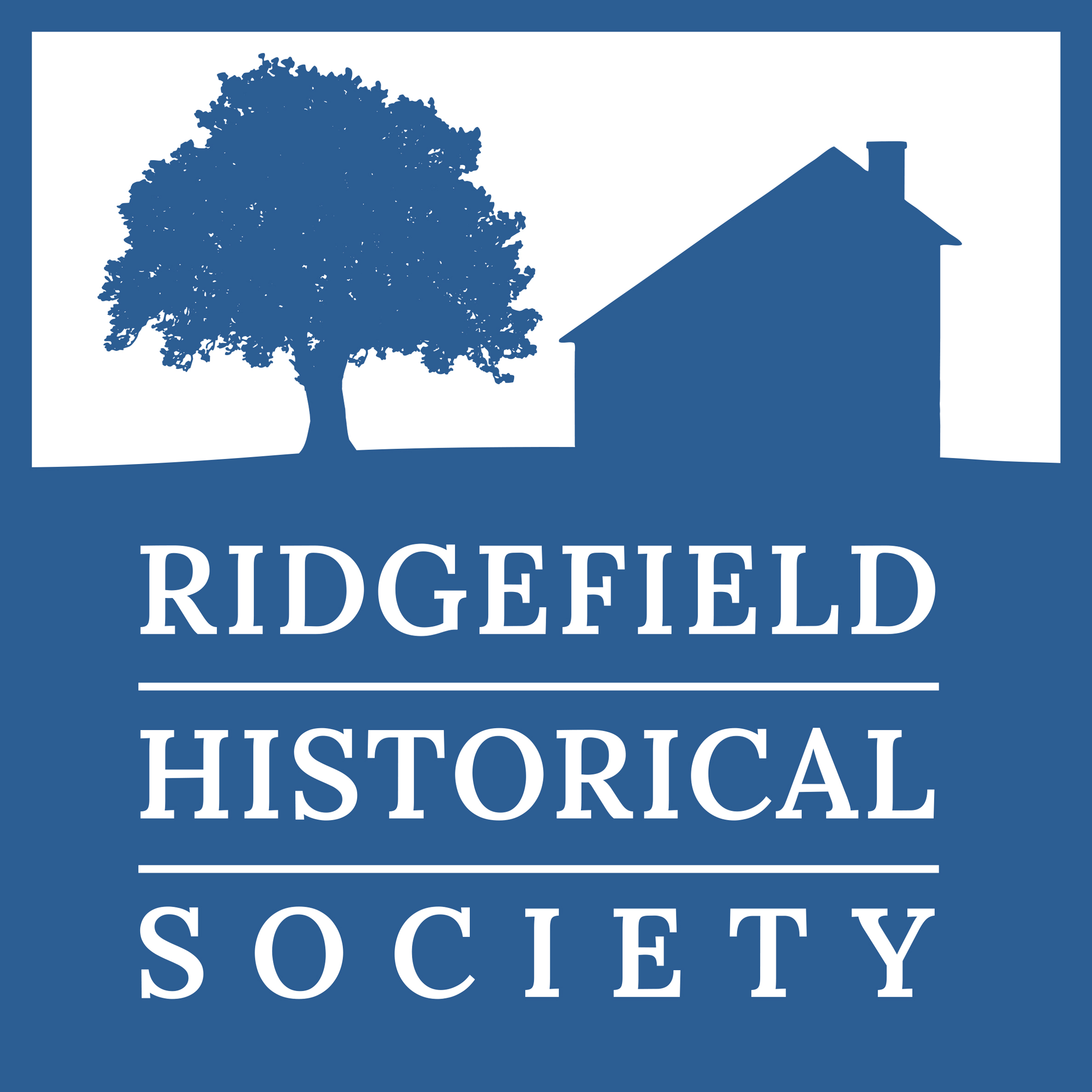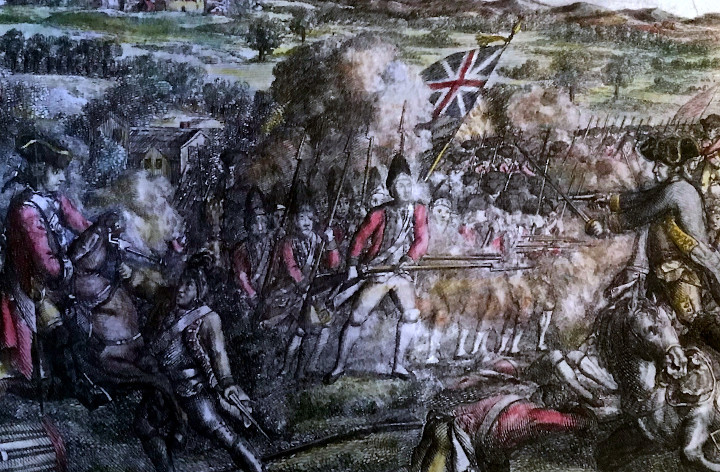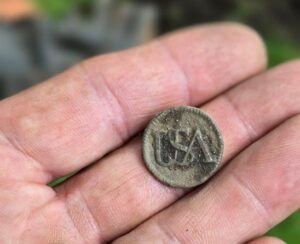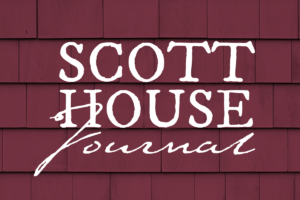In November 2019, the Battle of Ridgefield became the subject of intense interest with the discovery of human remains under the basement of a historic house, which sits not far from a plaque that reads,
In Defense of American Independence, At the Battle of Ridgefield, April 27, 1777, Died Eight Patriots, who were laid in the Grounds, Companioned by Sixteen British Soldiers, Living their enemies, dying their guests.
A complete investigation resulted in the excavation of four individuals and the documentation of a fifth, as well as another anomaly in the backyard identified with Ground Penetrating Radar.
All of the recovered individuals are characterized as robust young men and four were found in a single trench. Jacket buttons are currently in conservation baths, but have not been positively identified as those of British troops, Continental Soldiers, or the militia, but all other evidence suggests that these men were casualties of the Battle. Walter Woodward, the State’s Historian stated, “There’s nothing quite like looking down on the skeletons of three men hastily buried in shallow Revolutionary War graves to focus one’s attention on questions of war and patriotism and what—then and now—it meant and means to be an American.”
The Ridgefield Historical Society (RHS), in partnership with the State Historic Preservation Office (SHPO), would like to take this opportune moment of public interest to create a stewardship plan for the battlefield—understanding and putting into context the recently identified remains of the soldiers. The Battle was the only inland engagement of the Revolutionary War fought in Connecticut and is now believed to be the only Connecticut location where fallen soldiers have been recovered from a battlefield.
On the night of April 25, 1777, Major General William Tryon had marched his troops from their landing at Westport to destroy patriot supplies at Danbury. After accomplishing that goal, and following an overnight encampment in Danbury, he directed his men south through Ridgefield, choosing a different route back to the ships after receiving warning of the massing opposition. On April 27, the Revolutionary War came to Ridgefield, as some two thousand British and loyalist troops under Tryon fought patriot soldiers, militia, and volunteers, led by Generals David Wooster, Benedict Arnold, and Gold Selleck Silliman.
The first skirmishes in Ridgefield consisted of a surprise rear-guard attack by Wooster and took place at two locations along the road from Ridgebury to the village. It was reported that at least two British soldiers had been killed and forty were taken prisoner. Wooster retreated and when he returned, was mortally wounded in the second attack. The final and main engagement centered on a barricade at the north end of Main Street. Anticipating the British discharge of flanking parties, Silliman was prepared, but outnumbered three to one. Arnold gave the order to retreat as he faced the approaching enemy after the barricade was breached. The British troops marched south of the village and camped overnight off Wilton Road West. The Battle is recorded as a triumphant success for the British, but it turned the tide of sentiment in Connecticut. As the British departed, the militia regrouped and overnight, approximately 500 men from Connecticut and neighboring New York arrived.
Much is known about Tryon’s Raid, and the Battle specifically, but further research is needed as evidenced by the discovery of the skeletal remains. Some of the questions that have recently arisen are: Were the skeletons those of Patriots or Loyalists or British troops? How did the non-combatant residents of Ridgefield interact with the soldiers? What specifically did the British and Loyalist soldiers learn from the Ridgefield encounters? Who buried casualties from the Battle? Where are the other soldiers that died in the Battle buried? While skeletal and artifact analysis is ongoing, only further research could provide additional answers.
Although a few battlefield artifacts have been recovered, such as cannonballs, the Battle has been considered mostly from a historical perspective rather than a tactical or archaeological one. Interpretation has relied on diaries or written accounts of the events. The details of how and where the event unfolded would best be understood through comprehensive, systematic testing of the area as well as considerations beyond the engagement to include encampments, field hospitals, and the cultural landscape. The battlefield has been subject to the pressures of privately owned properties, landowners’ activities, and their attitudes toward preservation. The battlefield is already densely populated and continues to be subject to the pressures of development. This is why the second part of the grant is crucial to the long-term stewardship of the site. Although RHS has garnered commitments from local and state government, landowner stewardship is critical. At this time, there is significant public interest in the Battle. RHS and SHPO would like to convert this enthusiasm into preservation action and long-term stewardship of this very important site through community-based dialogue.





